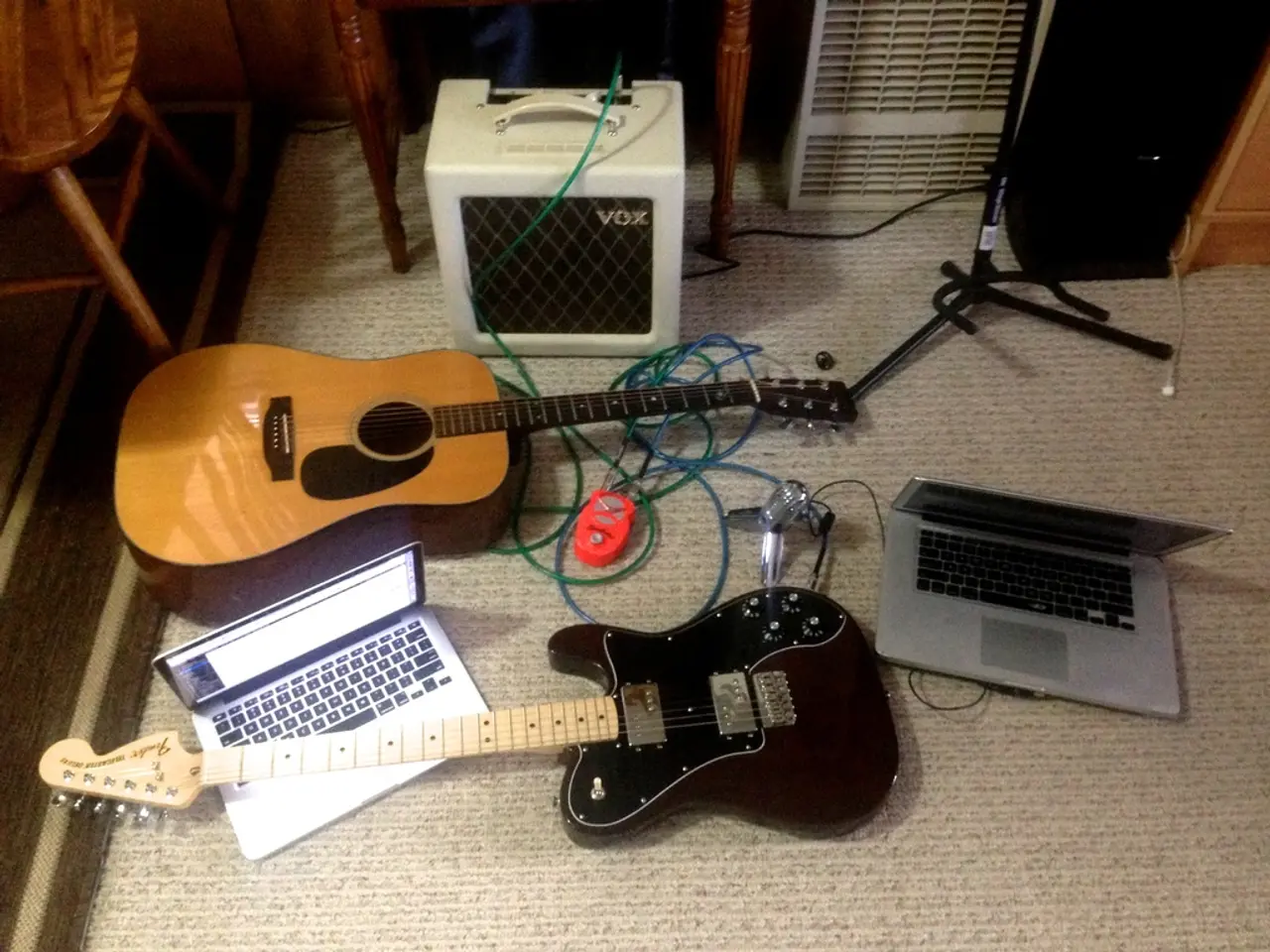Key Points to Consider When Picking Out New Audio Equipment:
In the world of audio equipment, choosing the right speakers can be a daunting task. Two popular options are floor-standing (tower) speakers and bookshelf speakers, each with their unique advantages and disadvantages. Here's a guide to help you make an informed decision based on sound characteristics, room size and acoustics, amplification and power requirements, placement flexibility, and intended use.
**Sound Characteristics**
Floor-standing speakers, with their larger cabinet size and additional woofers, typically offer more bass extension, greater dynamics, and a larger sound scale. This makes them well-suited for listeners who prioritize deep, powerful bass and full-range sound, especially in larger rooms. On the other hand, bookshelf speakers, often two-way designs with a tweeter and woofer, excel in precision, imaging, and soundstage. Their simpler, more rigid cabinet design generally delivers cleaner mid-range and high frequencies with detailed sound reproduction.
**Room Size and Acoustics**
Floor-standing speakers require more physical space and "room to breathe" to perform optimally. They are usually better for larger rooms or higher volume listening. In contrast, bookshelf speakers are more forgiving in smaller or acoustically challenging rooms. Their smaller cabinet size means less bass interaction with room boundaries, leading to cleaner and tighter bass without boominess.
**Amplification and Power Requirements**
Contrary to some misconceptions, small speakers like bookshelves may need more amplification power to reach the same loudness as floor-standing speakers because of their lower sensitivity. Floor-standing speakers can often be louder with less power due to higher sensitivity, which is beneficial in larger spaces.
**Placement Flexibility**
Bookshelf speakers require speaker stands or furniture to position the tweeters at ear level for optimal sound. This flexibility allows for more precise placement both horizontally and vertically, which is critical for good imaging and soundstage. Floor-standing speakers are designed to stand on the floor and are less flexible in placement but generally easier to position because they are self-standing.
**Intended Use**
If you want speakers primarily for movies or deep impactful bass, floor-standing speakers are often recommended due to their bass performance and dynamics. For music listening focused on detail, imaging, and mid/high frequencies, bookshelf speakers are frequently preferred.
Ultimately, choosing between them depends on your room size, listening preferences, and available amplifier power. For a more detailed comparison, consider a guide that provides a summary table outlining the differences in bass and dynamics, soundstage and imaging, room size suitability, amplification needs, placement flexibility, and use case.
[1] A Beginner's Guide to Becoming a DJ. (n.d.). Retrieved from [link] [2] A Guide to Speaker Placement. (n.d.). Retrieved from [link] [3] The Basics of Choosing New Speakers. (n.d.). Retrieved from [link] [4] The Impact of Price on the Choice between Active and Passive Speakers. (n.d.). Retrieved from [link]
- While researching for the right music gear, a retro gamer might stumble upon a variety of game consoles and find that some high-end models come equipped with impressive sound systems, providing an immersive experience for both games and music.
- For the recordhead.biz customer seeking to expand their music gear collection, considering a versatile turntable would not only allow them to enjoy their vinyl records but also provide an ideal addition to their current gadgets and technology setup.
- In the world of audio equipment, just as tools like floor-standing speakers and bookshelf speakers cater to different sound preferences, game consoles can offer a range of options for retro gaming enthusiasts, as some models feature built-in emulators enabling them to relive their favorite retro games.




